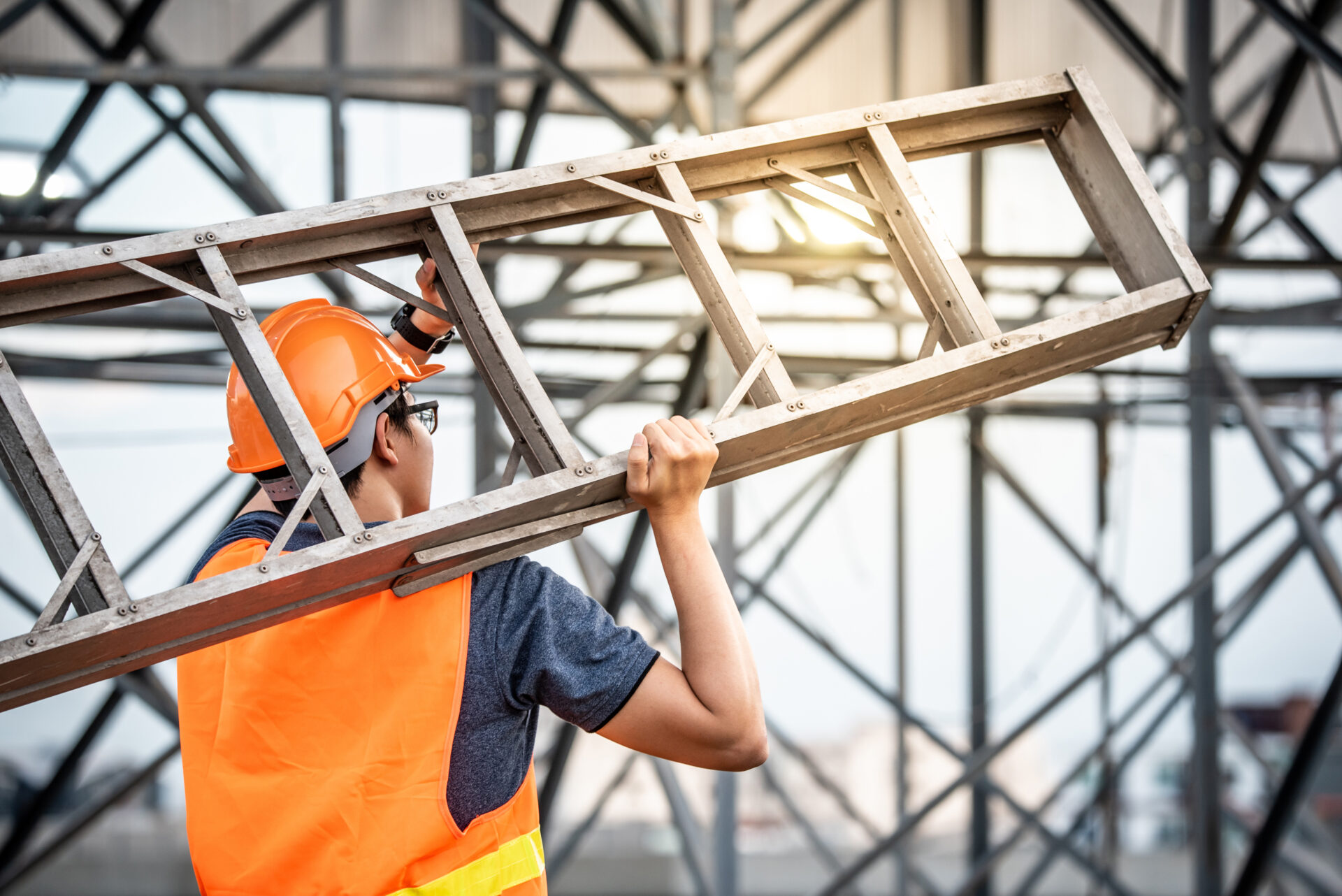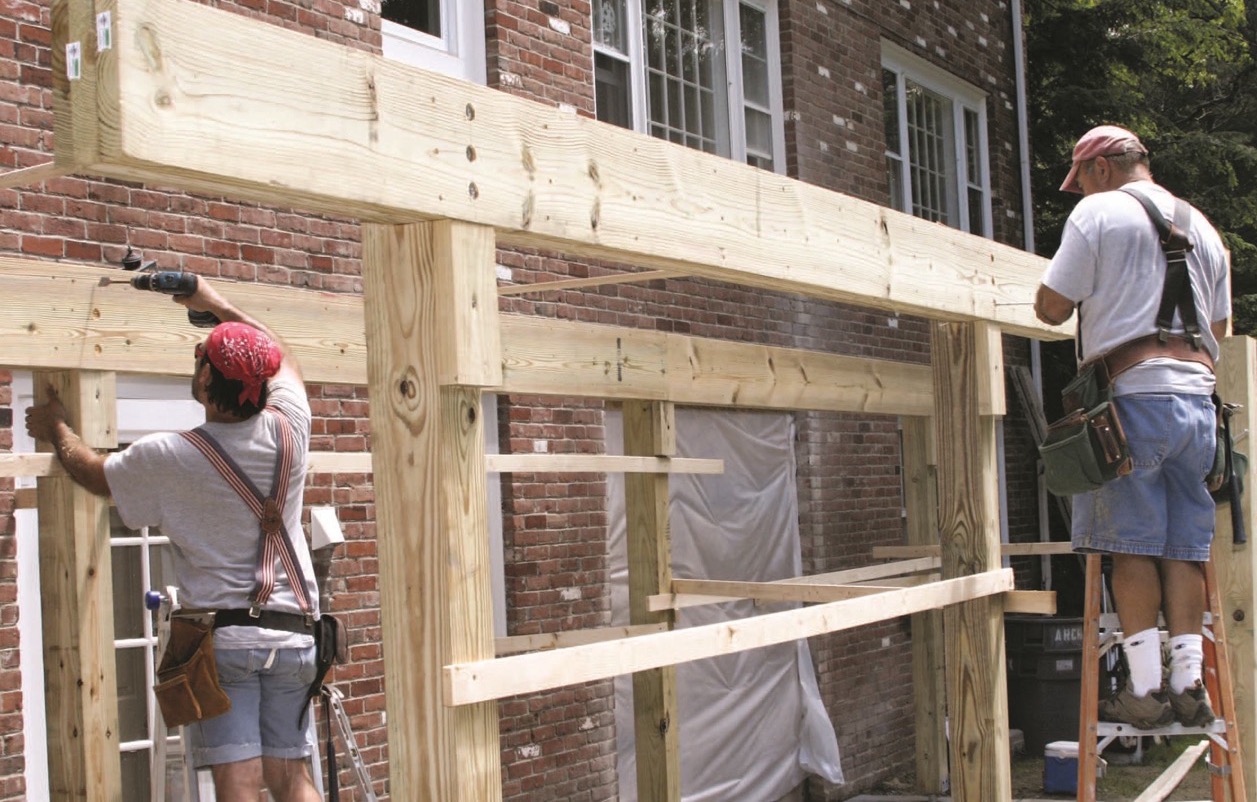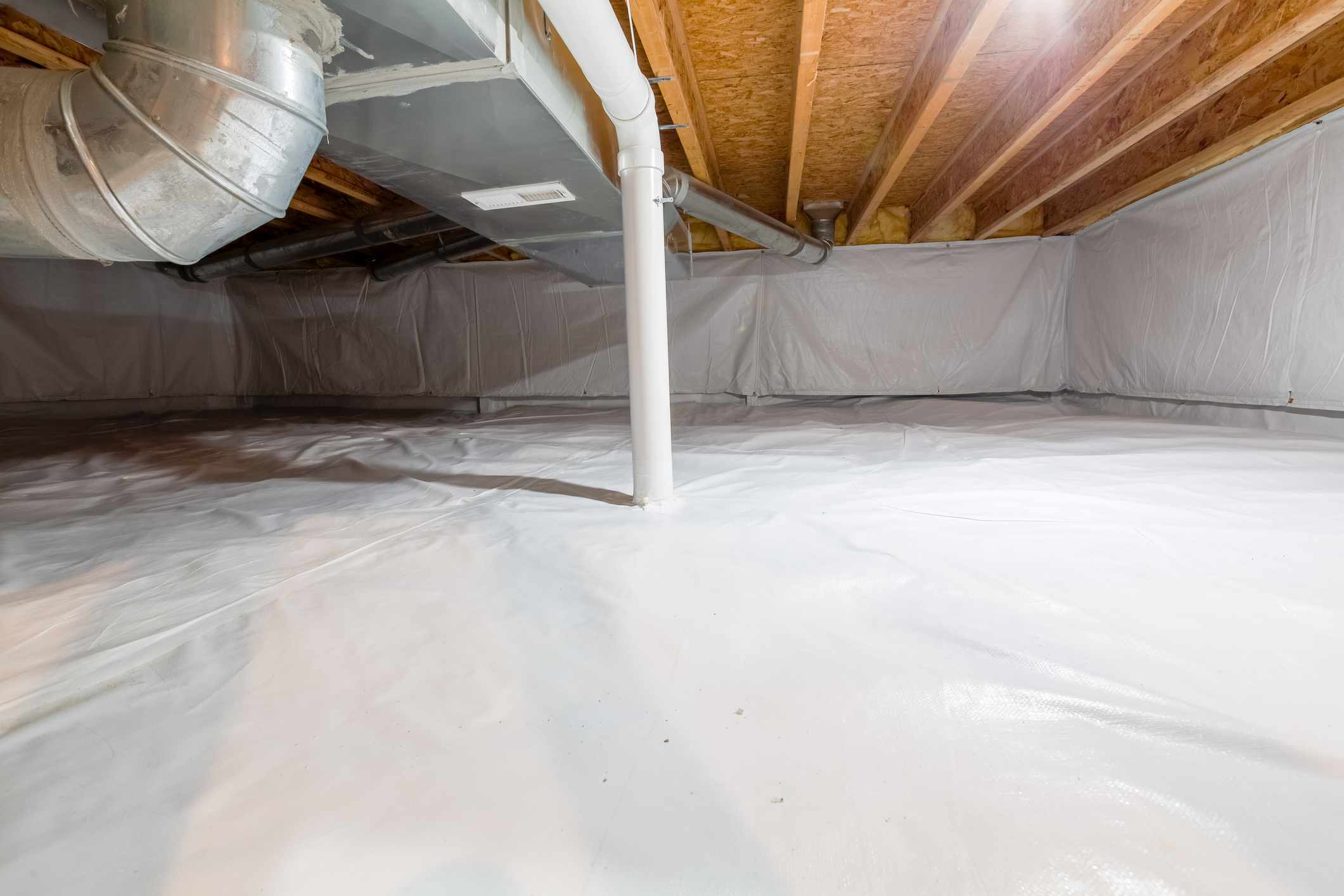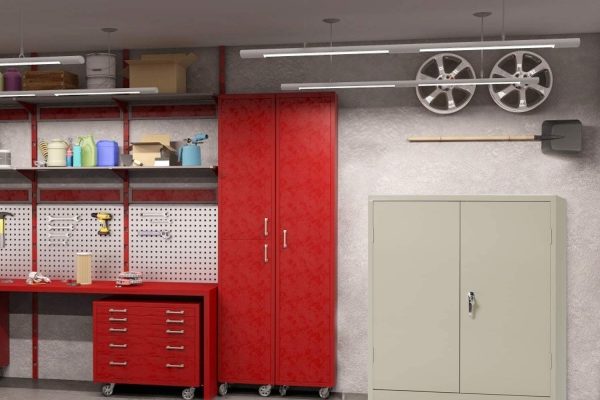

Articles
Everything You Need To Know About Ladders
Modified: August 28, 2024
Discover the best articles on why and how to climb the career ladder. Gain valuable insights and tips to accelerate your professional growth.
(Many of the links in this article redirect to a specific reviewed product. Your purchase of these products through affiliate links helps to generate commission for Storables.com, at no extra cost. Learn more)
Introduction
A ladder is a simple and essential tool that has been used for centuries to help us reach heights that would otherwise be inaccessible. Whether it’s for home repairs, construction projects, or even just hanging decorations during the festive season, having a reliable ladder is crucial.
In this article, we will explore the importance of a ladder, the different types available, considerations for choosing the right ladder, basic safety tips, how to inspect and maintain your ladder, and common mistakes to avoid. Whether you are a DIY enthusiast or a professional tradesperson, understanding the ins and outs of ladders will help you make informed decisions and ensure your safety.
So, let’s get started and delve into the world of ladders!
Key Takeaways:
- Choose the right ladder by considering height, weight capacity, stability, and usage environment. Prioritize safety, proper maintenance, and avoid common mistakes for a risk-free ladder experience.
- Ladders are versatile, providing accessibility, efficiency, and safety. Understand different types, essential safety tips, and maintenance to confidently tackle tasks at any height.
The Importance of a Ladder
When it comes to completing tasks at heights, a ladder is an indispensable tool. It provides stability and support, allowing you to reach elevated areas with ease. Here are a few key reasons why a ladder is important:
- Accessibility: Ladders enable us to access areas that are otherwise out of reach. Whether it’s changing a lightbulb, cleaning windows, or painting a ceiling, a ladder allows you to safely reach these elevated spaces.
- Versatility: Ladders come in various shapes and sizes, making them suitable for a wide range of applications. From step ladders for indoor use to extension ladders for outdoor tasks, having multiple ladder options ensures you can tackle different projects effectively.
- Efficiency: Using a ladder can significantly improve your efficiency and productivity. Instead of relying on makeshift solutions or struggling to balance on unstable surfaces, having a ladder provides a secure platform for you to work comfortably and efficiently.
- Safety: Safety should always be a top priority when working at heights. Ladders are designed with safety features such as non-slip steps and sturdy construction to minimize the risk of accidents. Ascending a ladder with caution and using proper safety techniques further reduces the likelihood of falls or injuries.
Regardless of the task at hand, having a reliable ladder on hand ensures you can work confidently and safely. From simple household chores to complex construction projects, a ladder plays a vital role in making these tasks more accessible and manageable.
Different Types of Ladders
Not all ladders are created equal. There are various types of ladders available, each designed for specific purposes. Understanding the different types of ladders will help you choose the right one for your needs. Here are some common types:
- Step Ladders: Step ladders are self-supporting and have a hinged design that allows them to be set up without any additional support. They are perfect for tasks such as painting walls, changing light fixtures, or reaching high shelves. Step ladders usually have two sides of equal length with steps on one side and a platform on top for stability.
- Straight Ladders: Straight ladders are the simplest form of ladders, consisting of a single elongated piece with rungs or steps. These ladders need to be leaned against a stable surface, such as a wall or a tree, for support. They are ideal for tasks like gutter cleaning, roof access, or tree trimming.
- Extension Ladders: Extension ladders are versatile and adjustable in length. They consist of two or more sections that can slide and lock into place, allowing you to extend the ladder to various heights. Extension ladders are commonly used for tasks like outdoor maintenance, construction, and reaching upper levels of a building.
- Platform Ladders: Platform ladders have a large and stable platform area at the top, providing a comfortable and secure working space. They are often used in professional settings like warehouses, construction sites, or when working on electrical or plumbing installations.
- Multi-Purpose Ladders: As the name suggests, multi-purpose ladders are incredibly versatile and can be configured in different ways to adapt to various tasks. They can be transformed into step ladders, straight ladders, or even used as scaffolding. These ladders are an excellent choice for those who require flexibility in their projects.
- Telescoping Ladders: Telescoping ladders are compact and lightweight, making them easy to transport and store. They consist of overlapping sections that can be extended or contracted to the desired height. These ladders are perfect for tasks that require frequent mobility or working in tight spaces.
Each type of ladder has its own set of advantages and considerations. Assessing your specific needs and the nature of your projects will help you determine which ladder type is the most suitable for you.
Considerations for Choosing the Right Ladder
Choosing the right ladder for your needs involves considering several factors. By taking these considerations into account, you can ensure that you select a ladder that is safe, practical, and suitable for the tasks you intend to undertake. Here are some key considerations to keep in mind when choosing a ladder:
- Height and Reach: Determine the maximum height you need to reach to complete your tasks. This will help you select a ladder with an appropriate height or adjustable length. Keep in mind that you should never stand on the topmost rung of a ladder, so factor in the height of the ladder itself when considering the ladder’s reach.
- Weight Capacity: Consider the weight capacity of the ladder to ensure it can safely support you and any equipment or materials you will be using. Check the weight rating provided by the manufacturer and make sure it is appropriate for your needs.
- Stability: Stability is crucial for ladder safety. Look for ladders with features such as anti-slip rungs or steps, wide bases for stability, and sturdy construction. Consider the nature of the surfaces you will be working on to ensure the ladder’s base is suitable for stability.
- Portability: If you need to move the ladder frequently or transport it to different locations, consider the weight and portability of the ladder. Lighter weight ladders or ladders with built-in handles or wheels can make transportation easier.
- Usage Environment: Consider whether you will be using the ladder indoors, outdoors, or in specific conditions. For outdoor use, make sure the ladder is made of weather-resistant materials. If you will be working near electrical sources, opt for ladders with non-conductive materials to minimize the risk of electric shock.
- Type of Task: Different tasks may require specific ladder types. If you primarily need a ladder for household chores, a step ladder or lightweight extension ladder might suffice. For more heavy-duty construction or professional tasks, consider sturdier and more versatile ladders.
- Storage Space: Take into account the storage space you have available for the ladder. Some ladders are collapsible or have telescoping features, making them easier to store in compact spaces.
By considering these factors, you can ensure that you choose a ladder that meets your specific requirements and provides a safe and stable platform for your work.
When writing a “Why How” ladder, start by clearly stating the problem or question (Why), then provide the solution or steps to address it (How). This structure helps to guide the reader through the logical progression of your argument or explanation.
Basic Safety Tips for Using a Ladder
Working with a ladder requires careful attention to safety precautions to prevent accidents and injuries. Here are some basic safety tips to keep in mind when using a ladder:
- Inspect the ladder: Before using a ladder, thoroughly inspect it for any signs of damage or wear. Check for loose or missing rungs, hinges, or screws. Ensure that all locks and safety mechanisms are in good working condition. Never use a ladder that is damaged or in poor condition.
- Choose the right ladder for the job: Select a ladder that is appropriate for the task you are about to undertake. Consider factors such as height, weight capacity, and stability. Using the wrong type of ladder or exceeding its weight limit can lead to accidents.
- Set up on a stable surface: Make sure the ladder is set up on a firm and level surface. Avoid placing the ladder on uneven or slippery ground. Use leveling devices or stabilizers if necessary to ensure stability.
- Position the ladder correctly: When leaning a ladder against a surface, follow the 4-to-1 rule. For every 4 feet of vertical height, move the base of the ladder out 1 foot from the wall or supporting structure. This angle provides optimal stability.
- Use the ladder properly: Ascend and descend the ladder facing towards it, maintaining three points of contact (two feet and one hand) at all times. Do not overreach or lean too far to the side, as it can cause the ladder to tip over. Keep your body centered and balanced on the ladder.
- Avoid carrying heavy objects: It is best to keep your hands free and maintain a firm grip on the ladder while climbing. If you need to carry tools or materials, use a tool belt or hoist them up after you have reached your position.
- Wear appropriate attire: Wear sturdy, non-slip footwear to prevent slipping off the ladder. Avoid loose clothing or jewelry that can get caught on the ladder. Consider wearing a safety helmet if working at a height where falling objects are a risk.
- Use additional safety equipment: Depending on the task and height, consider using additional safety equipment such as a ladder stabilizer to prevent tipping, a ladder guard to restrict access by unauthorized persons, or a harness and safety line for working at considerable heights.
- Maintain clear work areas: Keep the area around the ladder clear of clutter, debris, or obstacles that can cause tripping hazards. Secure any cords or hoses to prevent entanglement. If working near high traffic areas, use caution signs or barriers to alert others.
- Never leave an unattended ladder: When not using the ladder, properly store or secure it. Never leave a ladder unattended, especially if there are children around who may be tempted to climb on it.
By following these basic safety tips, you can greatly reduce the risk of accidents and ensure a safe working environment when using a ladder.
How to Properly Inspect and Maintain a Ladder
Regular inspection and maintenance of your ladder are essential to ensure its safety and longevity. By following these steps, you can properly inspect and maintain your ladder:
- Visual Inspection: Start by conducting a visual inspection of the entire ladder. Look for any signs of damage, such as cracks, dents, or bends in the metal or wooden components. Check for loose or missing rungs, screws, or hinges. Ensure that all locks and safety mechanisms are functioning properly.
- Clean the ladder: Remove any dirt, dust, or debris from the ladder. Wipe it down with a damp cloth to remove any stains or grime. Use a mild soap solution for stubborn dirt or grease. Avoid using harsh chemicals or abrasive cleaners that can damage the ladder’s surface.
- Check for stability: Ensure that the ladder is stable and will not wobble or shift during use. Test the stability of the ladder by applying pressure to different areas and observing any movement. If the ladder feels unstable or there is excessive movement, do not use it until it is repaired or replaced.
- Tighten loose components: Use a screwdriver or wrench to tighten any loose screws, bolts, or nuts. Check all hinges, locking mechanisms, and fasteners to ensure they are secure and in good working condition. Replace any missing or damaged components.
- Inspect the feet and non-slip features: Check the condition of the ladder’s feet or base. Make sure they are not worn, damaged, or cracked. Replace any worn-out or missing rubber or non-slip pads. These features provide stability and prevent the ladder from sliding or slipping.
- Assess weight capacity: Verify that the ladder’s weight capacity is suitable for your needs. Ensure that weight ratings and load limits are clearly marked and visible. Do not exceed the weight limit specified by the manufacturer as it can compromise the ladder’s safety and stability.
- Store the ladder properly: When not in use, store the ladder in a clean, dry area away from direct sunlight or extreme temperatures. Keep it away from chemicals or substances that can cause damage. Avoid placing heavy objects on top of the ladder, as it can lead to structural damage.
- Perform regular maintenance: In addition to inspections, perform regular maintenance on your ladder. This includes lubricating hinges and moving parts with a silicone-based lubricant to prevent rust and ensure smooth operation. Check the ladder’s condition periodically and address any repairs or replacements promptly.
By regularly inspecting and maintaining your ladder, you can ensure its safety and prolong its lifespan. A well-maintained ladder provides a reliable and secure platform for all your elevated tasks.
Common Mistakes to Avoid when Using a Ladder
While ladders are essential tools, they can be dangerous if used improperly. To ensure your safety and prevent accidents, it is important to be aware of common mistakes to avoid when using a ladder. Here are some key mistakes to steer clear of:
- Overreaching: One of the most common mistakes is overreaching while on a ladder. Stretching too far to the side or leaning too much can cause the ladder to become unbalanced and tip over. Always maintain your center of gravity and avoid overreaching by repositioning the ladder as needed.
- Using the wrong ladder: Using the wrong type of ladder for the task at hand is a common error. Each ladder has its own weight capacity and is designed for specific purposes. Ensure you select the correct ladder that can handle both your weight and the load you will be carrying.
- Not securing the ladder: Failing to properly secure the ladder can result in accidents. Make sure the ladder is set up on a stable surface and that it is securely positioned against the support structure. Failure to secure the ladder can lead to slips, falls, and potential injuries.
- Skipping safety equipment: Neglecting to use proper safety equipment is a dangerous mistake. Depending on the task and height, wearing a safety harness, using a ladder stabilizer, or using fall protection can greatly reduce the risk of accidents and injuries.
- Ignoring weight limits: Exceeding the weight capacity of a ladder is a serious safety hazard. Always check the ladder’s weight rating and avoid surpassing it. Overloading the ladder can compromise its stability and increase the risk of collapse.
- Rushing or being careless: Working hastily or carelessly on a ladder increases the chances of accidents. Take your time and focus on each step of the task. Do not rush, and always maintain three points of contact with the ladder to ensure stability.
- Improper climbing technique: Incorrect climbing technique, such as facing away from the ladder when ascending or descending, can lead to falls. Always face the ladder and maintain a firm grip on the rungs or side rails as you climb up or down.
- Using a damaged ladder: Using a ladder that is damaged or in poor condition is a big mistake. Before each use, inspect the ladder for any signs of wear, cracks, or missing components. A damaged ladder should be immediately repaired or replaced to ensure safety.
- Working in unfavorable conditions: Operating a ladder in adverse weather conditions or near hazardous areas is another mistake to avoid. Strong winds, rain, snow, or working near electrical sources can increase the risk of accidents. Assess the work environment and postpone ladder tasks if conditions are unfavorable.
- Being distracted: Distractions while on a ladder can endanger your safety. Avoid using your phone, listening to loud music, or engaging in activities that divert your attention. Focus solely on the task at hand and remain alert throughout.
By being mindful of these common mistakes and taking the necessary precautions, you can ensure a safer ladder experience and reduce the risk of accidents and injuries.
Conclusion
Ladders are indispensable tools that enable us to reach heights and complete tasks that would otherwise be inaccessible. Whether it’s for simple household chores or more complex construction projects, having the right ladder is essential for both efficiency and safety.
In this article, we explored the importance of ladders and their versatility in various settings. We discussed different types of ladders, such as step ladders, straight ladders, extension ladders, platform ladders, multi-purpose ladders, and telescoping ladders. Each ladder type has its own unique features and benefits, allowing you to choose the most suitable one for your specific needs.
We also emphasized the importance of considering key factors when choosing a ladder, such as height, weight capacity, stability, portability, usage environment, and type of task. Taking these factors into account ensures that you select the right ladder for the job, maximizing both safety and productivity.
Safety is paramount when working with ladders, and we provided essential safety tips to keep in mind. Proper ladder inspection, correct usage techniques, and the use of safety equipment are crucial in preventing accidents and injuries. Additionally, we highlighted the significance of regular ladder maintenance to ensure its longevity and reliability.
Finally, we discussed common mistakes to avoid when using a ladder. By being mindful of overreaching, using the wrong ladder, failing to secure the ladder properly, ignoring weight limits, and taking necessary precautions, you can significantly reduce the risk of accidents and work more safely while using the ladder.
Remember, a well-maintained ladder and adherence to safety guidelines are the keys to a successful and risk-free ladder experience. By making informed choices, properly maintaining your ladder, and following safety protocols, you can confidently tackle any task at height and ensure the well-being of yourself and those around you.
So, whether you’re a DIY enthusiast or a professional tradesperson, always prioritize safety, choose the right ladder for the job, and handle it with care. With these measures in place, you can reach new heights and accomplish your tasks with ease and confidence!
Frequently Asked Questions about Everything You Need To Know About Ladders
Was this page helpful?
At Storables.com, we guarantee accurate and reliable information. Our content, validated by Expert Board Contributors, is crafted following stringent Editorial Policies. We're committed to providing you with well-researched, expert-backed insights for all your informational needs.















0 thoughts on “Everything You Need To Know About Ladders”